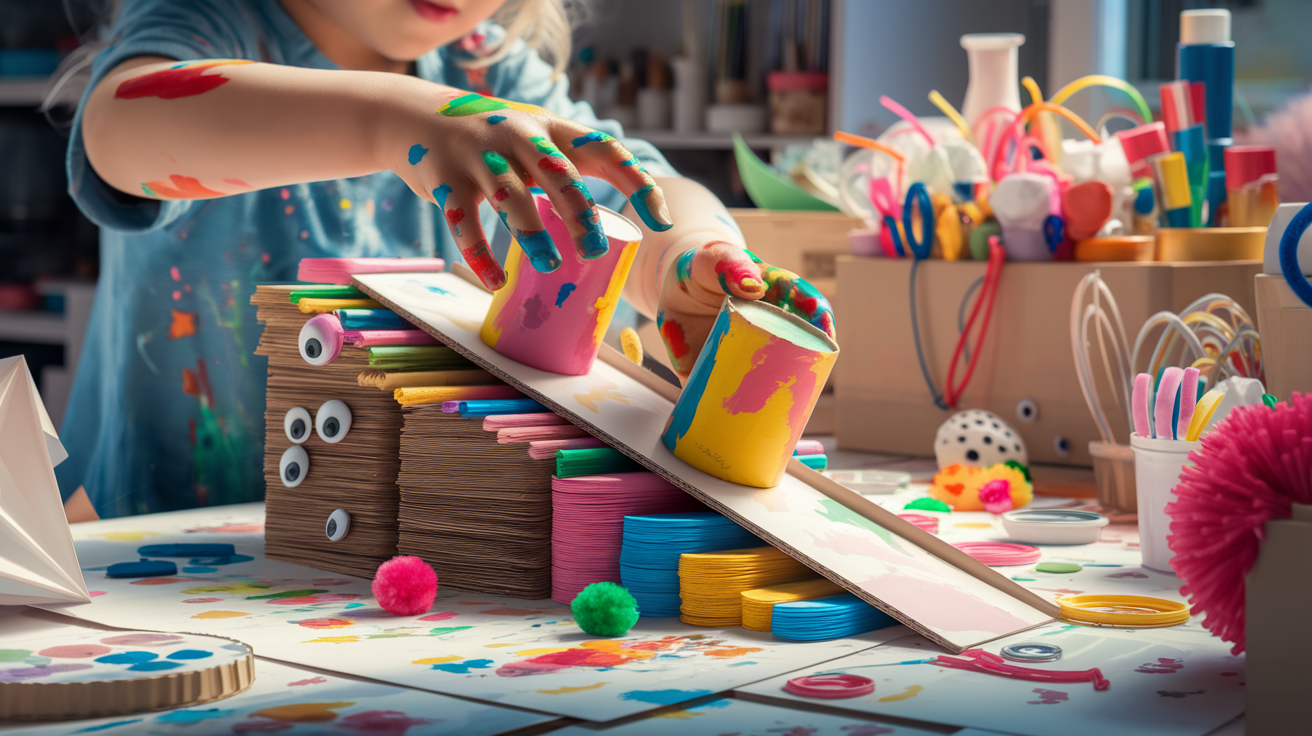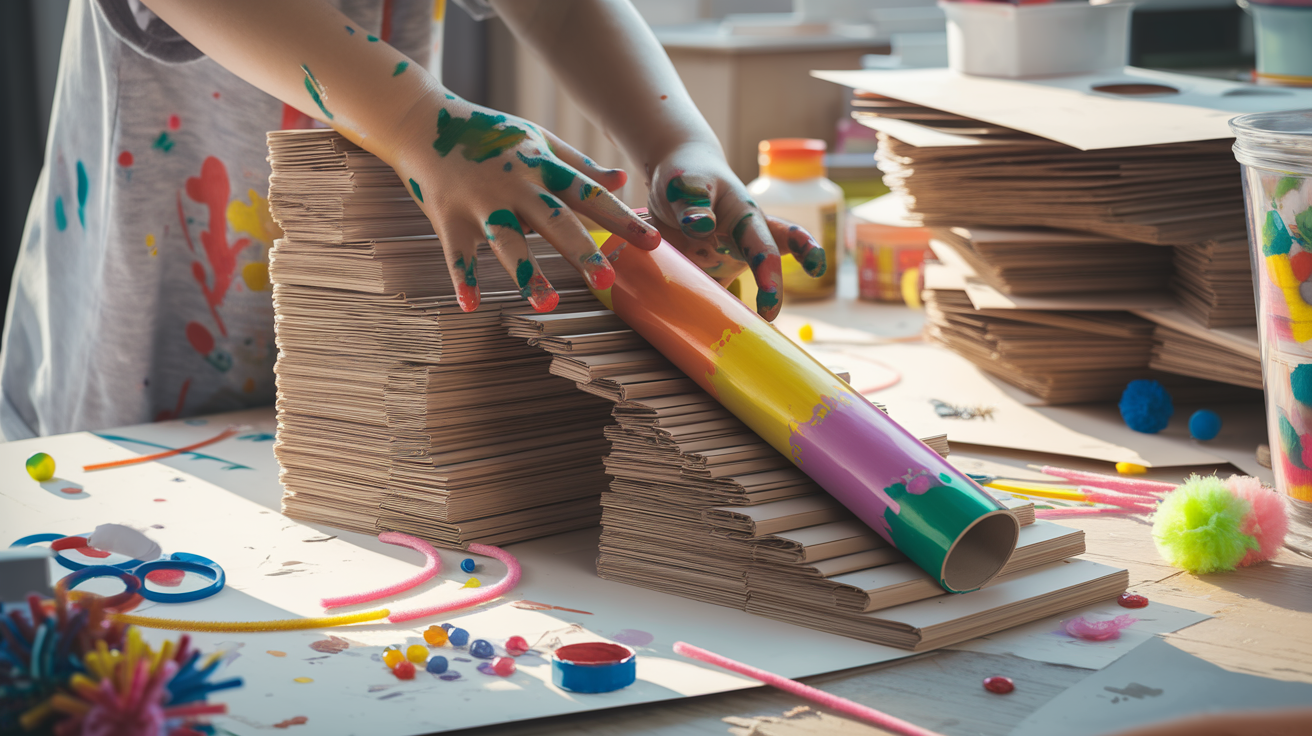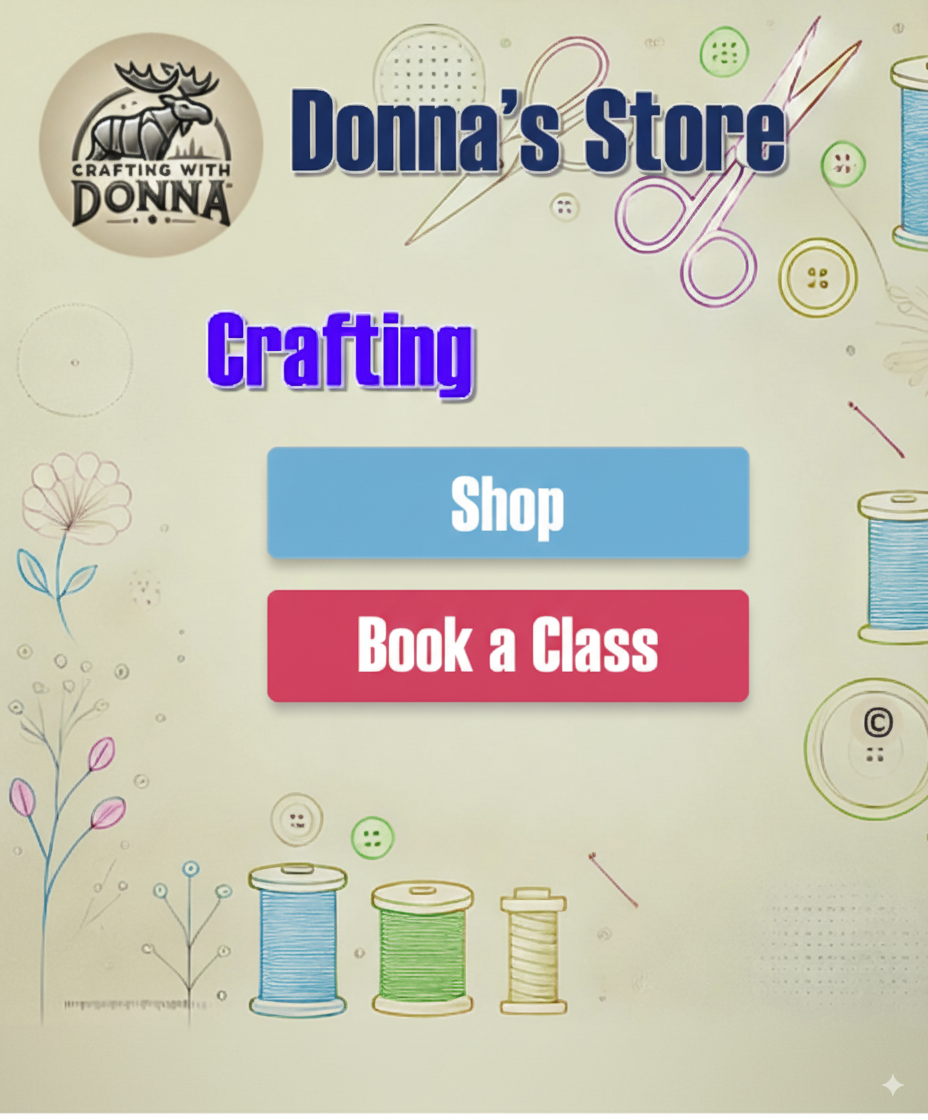How To Create Ball Rolling Crafts For Kids

Ball rolling crafts offer a fantastic avenue for handson learning, allowing children to explore principles of motion and color through engaging projects. Heather Tekavec’s playful rhymes and factual text serve as inspiration for young creators as they construct cardboard ramps or fashion DIY juggling balls.
The physics of motion becomes an exciting subject as kids investigate gravity, friction studies, and elasticity principles while designing their own simple tracks.
STEAM education truly shines with these tactile crafts, making both classroom learning and home learning experiences both enriching and enjoyable.
Encourage your child’s capacity for early scientific inquiry through creative engagement and dynamic movementbased learning activities.
Books Concepts Ignite Ball Rolling Crafts
The principles of mechanics are introduced through playful creation with Heather Tekavec’s book, guiding children through the initial stages of understanding motion. Suharu Ogawa’s vibrant illustrations accompany the factual text, delving into the mechanics of rolling objects science.
The exploration of ball type variations, from small marbles to larger Kinball and Zorb ball, introduces concepts such as mass comparison, elasticity, aerodynamics, and drag force principles. Tactile crafts, directly inspired by the pages—including building cardboard ramps, creating abstract movement art, and assembling DIY juggling balls—seamlessly connect reading with tangible experiences.
Vocabulary games and size comparisons enhance these activities, promoting teamwork development, broad educational engagement, and exploration of various science facts.
Nurture early childhood education with engaging rolling demonstrations and dynamic movement-based learning.
Exploring Motion with Simple Tracks
Creating simple tracks provides an excellent starting point for exploring the physics of motion.
Children can use cardboard ramps and various small balls, such as marbles, to observe how different surfaces affect movement. This hands-on approach encourages prediction exercises and discussion prompts about how inclines influence speed.
You can easily integrate math integration by having children count how many times a ball rolls down a ramp or make size comparisons between different objects. This fosters an early appreciation for early physics and kinetic energy.
DIY Ball Painting and Rolling Art
Discover the fun of rolling art by dipping small balls into paint and rolling them across paper.
This activity vividly illustrates motion principles and allows for creative expression.
Children can experiment with different colors and ball types, such as wiffle balls or marbles, to see how each creates a unique pattern.
It’s a wonderful way to engage in sensory play while also learning about momentum transfer. The resulting artwork is a tangible representation of movement experiments and a testament to creative projects.
Crafting DIY Juggling Balls
Making DIY juggling balls offers a wonderful opportunity for learning about weight and balance.
Fill balloons with materials like rice or beans, then tie them securely to create tactile crafts. This process allows for mass comparison and introduces concepts related to ball control.
The weight difference between a rice filling and a bean filling can lead to lively discussions and guessing games about which will be easier to juggle.
This type of tactile learning is incredibly beneficial for young children, preparing them for more complex educational engagement.
The Ball Size and Texture Game
Gather a collection of different-sized balls, from tiny marbles to larger ones, and explore their unique characteristics.
This texture games activity encourages children to compare and discuss the feel, weight, and rolling behavior of each object. It’s a simple yet effective way to introduce early learning concepts related to physics.
Activities can include estimating which ball will roll furthest or fastest, supporting observation skills and early scientific thinking. This fosters inclusive illustrations and diverse characters if the book is used alongside.
Trajectory Challenges and Obstacle Courses
Designing simple tracks or obstacle courses provides a dynamic environment for experimenting with trajectory challenges.
Children can use various materials to create paths for rolling objects, encountering direction changes and varying speeds.
This encourages an exploration of how factors like friction studies and curvature effects influence the ball’s path.
These experimental play sessions are excellent for developing problem-solving skills and a foundational understanding of gravity and air resistance.

Exploring Physics of Motion with Heather Tekavec
Heather Tekavec’s creative book, This is How a Ball Rolls, vibrantly introduces young minds to the exciting world of physics of motion. Through engaging illustrations and playful rhymes, the book clarifies how a ball’s journey is influenced by forces beyond gravity alone.
Ball rolling crafts, inspired by the book’s concepts, demonstrate that friction with various surfaces and the angle of inclined planes significantly alter how each ball moves.
Material selection, for example, comparing the roll of marbles to heavy Kin-balls, directly impacts trajectory due to differences in both mass and surface texture.
Aerodynamics principles, like drag force, are clearly illustrated by Tekavec; a tennis ball experiences slowed motion and an altered path because of the push from air resistance. These interactive ideas transform simple rolls into delightful explorations, perfect for STEAM education and encouraging early scientific inquiry, offering children an exciting way to engage with science facts.
Heather Tekavec’s work also explores rolling objects science, from small marbles to large Kin-balls, making early physics accessible.
Children can explore friction studies with simple tracks and cardboard ramps, observing how different ball types and their variations affect motion principles. Introducing prediction exercises and guessing games with these motion principles enhances educational engagement.
The book’s emphasis on kinetic energy and momentum transfer provides foundational knowledge for early learning concepts.
DIY Juggling Balls for Hands-On Learning
DIY juggling balls provide an excellent opportunity for children to transition from basic rolling to developing coordination and controlled manipulation.
Creating your own juggling balls, by filling balloons with rice or bean filling, teaches practical mass comparison and demonstrates weight comparison.
These tactile crafts also significantly improve hand-eye coordination, a key component of ball control. Cognitive benefits supporting focus, patience, and problem-solving skills naturally emerge as children practice their initial juggling sequences.
Tip for beginners: Start by tossing one ball, then gradually add more for a successful and rewarding activity. With readily available materials, this early learning concept effectively bridges playful STEAM discovery with practical, movement-based learning, suitable for both classroom learning and home learning environments.
These DIY juggling balls are perfect for tactile learning and offer a direct pathway to understanding elasticity principles and how a ball feels when thrown.
Engaging in texture games and trajectory challenges, such as setting up obstacle courses, allows for observation of direction changes and speed observation.
Exploring curvature effects and friction studies with different ball type variations adds depth to the learning.
These activities also provide opportunities for vocabulary games and math integration, including counting passes during play. With inclusive illustrations and diverse characters, these preschool activities and kindergarten crafts promote teamwork development and provide engaging sensory play.
Physics of Motion and Juggling Balls
- Heather Tekavec’s book, This is How a Ball Rolls, introduces children to physics of motion concepts like friction, inclined planes, aerodynamics, and drag force through illustrations and rhymes.
- Activities inspired by the book, such as ball rolling crafts and DIY juggling balls, help children understand mass comparison, weight comparison, and the impact of material selection and surface texture on trajectory.
- DIY juggling balls enhance hand-eye coordination and develop cognitive skills such as focus, patience, and problem-solving, serving as a practical application of early learning concepts in movement-based learning.
- Exploring concepts like elasticity, curvature effects, and friction studies with different ball types, alongside trajectory challenges and obstacle courses, enriches the learning experience for young children.
Marble Play and Simple Tracks
Heather Tekavec’s engaging book invites young minds to explore the fundamental forces behind how objects move. This exploration of the physics of motion begins with the simple yet captivating world of marble play.
By observing gravity’s consistent pull on these small spheres in a controlled setup, children grasp early concepts of force and movement.
Observing how these rolling objects travel along specially designed simple tracks illuminates how elevation and curvature influence their speed.
Heather Tekavec’s playful science book unlocks the fascination behind marble play by inviting children to observe how gravity constantly pulls rolling objects downward in a safe, controlled environment. The physics of motion comes alive as marbles glide along simple tracks, letting young learners explore how track elevation and curvature effects change their path and speed.
* Heather Tekavec’s book shows that higher tracks boost speed observation as gravity’s pull increases.
* Smooth, gentle curves keep marbles moving fast, while tight turns slow them down due to friction and direction changes.
Kinball and Zorb ball activities, alongside DIY juggling balls, expand the understanding of motion principles.
The book uses playful rhymes and factual text to make early physics accessible.
This hands-on approach, with an emphasis on STEAM education, makes experimenting with surfaces a key part of the learning process.
Exploring Friction and Surfaces
Suharu Ogawa’s insights into rolling objects science highlight the importance of surface interactions during movement experiments.
Surface friction studies add another layer of discovery—try sending marbles down ramps made from cardboard, sandpaper, or smooth plastic to see which materials slow or speed up the ball. Tactile crafts like these are essential for developing an intuitive grasp of physical properties.
This hands-on early physics experiment makes simple tracks a central tool in STEAM education for curious kids, laying the groundwork for the next section on inclined planes and cardboard ramps.
It encourages prediction exercises and offers discussion prompts about how different textures affect motion.
Ball rolling crafts and movement experiments offer a playful introduction to early learning concepts.
Inclined Planes and Cardboard Ramps
Ball rolling crafts and movement experiments deepen curiosity as children shift from simple tracks to experimenting with inclined planes.
Discovering how the angle of a ramp relates directly to acceleration, kids observe that a steeper ramp angle greatly increases a ball’s speed due to gravity’s intensified pull. This exploration naturally leads into discussions about kinetic energy and momentum transfer.
Ball rolling crafts and movement experiments deepen curiosity as children shift from simple tracks to experimenting with inclined planes. Discovering how the angle of a ramp relates directly to acceleration, kids observe that a steeper ramp angle greatly increases a ball’s speed due to gravity’s intensified pull.
* Cut a sturdy strip of cardboard and raise one end with blocks or books, adjusting the incline for speedy or slow tests.
This promotes experimental play.
* Use a protractor to measure and fine-tune the ramp’s angle, connecting math integration to real-world science facts. This supports counting passes and size comparisons.
This hands-on exploration of physics for kids bridges the gap between theory and practice, making home learning and classroom learning equally effective. Children strengthen their understanding of motion principles while having fun predicting, observing, and discussing the results, fostering teamwork development and early scientific inquiry.
Building and Adjusting Ramps
Childrens book activities like building adjustable cardboard ramps are excellent for promoting hands-on learning and understanding motion principles.
Cut a sturdy strip of cardboard and raise one end with blocks or books, adjusting the incline for speedy or slow tests.
Use a protractor to measure and fine-tune the ramp’s angle, connecting math integration to real-world science facts. This process enhances predictive skills and encourages thorough observation.
Movement-based learning with inclusive illustrations from the book can further engage diverse characters.
STEAM education activities like these foster engagement with sensory play and kinetic learning.
Track how ball momentum transfer and velocity multiply as you steepen the incline, blending hands-on learning and early scientific inquiry for effective home learning or classroom learning. Kids strengthen their understanding of motion principles while having fun predicting, observing, and discussing the results.
This naturally leads into discussing elasticity principles and aerodynamics principles.
- Higher tracks boost speed observation due to gravity’s increased pull on rolling objects.
- Smooth, gentle curves allow marbles to maintain higher speeds compared to tight turns, which slow them down due to friction and direction changes.
- Steeper ramp angles on inclined planes significantly increase a ball’s speed because of gravity’s intensified pull, demonstrating acceleration.
- Measuring ramp angles with a protractor integrates math concepts with scientific observations of motion.
Movement Experiments and Trajectory Challenges
Ball rolling crafts offer a fantastic way for children to explore varied launch angles and heights, utilizing simple cardboard ramps and marbles for fascinating movement experiments. These carefully orchestrated trajectory challenges invite kids to predict and achieve specific landing zones by adjusting ramp heights and angles, effectively connecting hands-on learning with early physics concepts.
Projectile motion can be introduced in a simplified context: when a ball is launched off a ramp, its path—which we call its trajectory—is determined by its initial speed and the angle of launch.
During these exciting movement experiments, reproducibility greatly improves accuracy; marking ramp positions and precise starting points ensures consistently reliable results for prediction exercises.
For better aim when addressing your target, focus intently on the target itself and strive for a smooth, consistent release, reinforcing tactile learning and the fundamental physics of motion.
Elasticity and Friction Studies
Elasticity becomes remarkably clear when children compare how a bouncy rubber ball rebounds higher than a standard plastic ball, thanks to the stored energy released upon impact.
In engaging friction studies, contrasting smooth surfaces like polished hardwood with rough textures such as carpets vividly demonstrates how drag force effectively slows down rolling objects. DIY juggling balls, skillfully crafted by filling balloons with rice or beans, assist in teaching essential concepts of mass comparison and developing good ball control.
An especially engaging experiment involves rolling each specific type of ball across various distinct surfaces, carefully observing changes in their acceleration and distance traveled—connecting these tactile crafts directly to readily available science facts.
These integrated activities foster robust early scientific inquiry and make the core principles of motion and material properties readily accessible through creative engagement, providing significant educational engagement.
Movement and Material Properties in Action
- Children can explore projectile motion by adjusting cardboard ramp heights and angles to achieve specific landing zones for rolling balls.
- The trajectory of a launched ball is determined by its initial speed and launch angle, demonstrating fundamental physics concepts through hands-on experiments.
- Comparing the rebound height of a rubber ball versus a plastic ball illustrates the concept of elasticity and stored energy release.
- Contrasting smooth and rough surfaces reveals how drag force slows down rolling objects, providing a tangible understanding of friction.
STEAM Education Through Ball Crafts
STEAM education thrives when ball rolling crafts connect real-world physics of motion to imaginative, hands-on learning, synthesizing all previously explored concepts under a unified STEAM framework. Integrating art and technology—such as abstract painting with marbles and LEGO-built tracks—shows children how creativity and engineering work side by side, from color theory to building stable structures, highlighting how art, technology, engineering, and math interrelate in these activities.
Math integration comes alive as kids count passes, compare ball sizes, or measure how far a Zorb ball rolls across a yard.
Iterative design—testing, modifying, and improving marble ramps or DIY juggling balls—cultivates problem-solving and experimental play skills, emphasizing the value of iterative design and problem-solving.
By uniting science facts inspired by Heather Tekavec’s book with inclusive, tactile crafts and playful rhymes, these activities nurture a spirit of curiosity and lifelong learning through joyful exploration and teamwork.
Exploring Rolling Objects with Heather Tekavec
Ball rolling crafts provide a compelling entry point for exploring the physics of motion, drawing inspiration from works like Heather Tekavec’s ‘This is How a Ball Rolls’. This book introduces children to a variety of balls, delving into the science behind rolling objects through vivid illustrations, engaging rhymes, and factual text.
The narrative progresses through balls of varying sizes, from small marbles to large Kin-balls, explaining sports and scientific concepts such as elasticity, aerodynamics, and drag force, thereby encouraging hands-on learning and play. Tactile crafts, like making juggling balls filled with rice or beans, offer a tangible way to discuss mass comparison and ball control.
Comparing different ball types and sizes helps children grasp weight comparison and how texture affects rolling.
These activities, including simple tracks and obstacle courses, facilitate trajectory challenges, allowing observation of changes in direction and speed related to curvature, friction, and ball type variations.
Vocabulary games and math integration, such as counting passes and size comparisons during rolling demonstrations, enhance educational engagement. The book’s emphasis on playful rhymes and factual text makes early physics concepts accessible, covering motion principles and elasticity principles.
This approach supports early childhood education and preschool activities, extending to kindergarten crafts and elementary science, promoting movement-based learning and outdoor play ideas.
Hands-On STEAM Activities and Their Educational Value
Ball rolling crafts are excellent for early learning concepts and sensory play, exploring concepts like kinetic energy, momentum transfer, gravity, friction, and air resistance through spherical objects and rotational motion. Children can create ramps using cardboard to test how marbles roll on flat versus inclined planes, exploring early physics and movement experiments.
DIY ball painting, using wiffle balls or marbles dipped in paint and rolled across paper, creates abstract movement and artistic expression, showcasing rolling art.
Making DIY juggling balls by filling balloons with rice or beans and then decorating them offers insights into mass comparison and ball control, an example of tactile learning.
The roll the ball size and texture game involves gathering different types and sizes of balls to compare and discuss their feel, weight, and rolling behavior, reinforcing weight comparison and texture games. DIY trajectory challenges encourage building simple tracks or obstacle courses to experiment with rolling different balls, observing direction changes and speed observation influenced by curvature effects and friction studies.
Vocabulary games and math integration, such as counting passes or comparing ball sizes, enrich educational engagement. These activities extend book-inspired activities, fostering creative engagement and early scientific inquiry, providing a foundation for playful science and kinetic learning.
Classroom learning and home learning environments benefit from these activities, which include prediction exercises, guessing games, and discussion prompts, strengthening teamwork development through collaborative play.
Inclusive illustrations featuring diverse characters are a hallmark of resources supporting early childhood education, preschool activities, and kindergarten crafts, making elementary science and movement-based learning accessible.
Outdoor play ideas and creative projects are readily facilitated by these concepts, offering simple tracks for experimental play.
By engaging with these diverse ball activities, children develop a foundational understanding of scientific principles while fostering creativity, problem-solving abilities, and a lasting enthusiasm for learning.
Key Takeaways from Ball Rolling Crafts
- Ball rolling crafts integrate art and technology, demonstrating how creativity and engineering interrelate through activities like abstract painting with marbles and building LEGO tracks.
- These activities facilitate math integration by having children count passes, compare ball sizes, and measure rolling distances, reinforcing numerical concepts.
- Iterative design is fostered as children test, modify, and improve creations like marble ramps or DIY juggling balls, cultivating problem-solving and experimental play skills.
- The crafts explore fundamental physics concepts such as elasticity, aerodynamics, drag force, kinetic energy, momentum transfer, gravity, and air resistance through hands-on experimentation.




